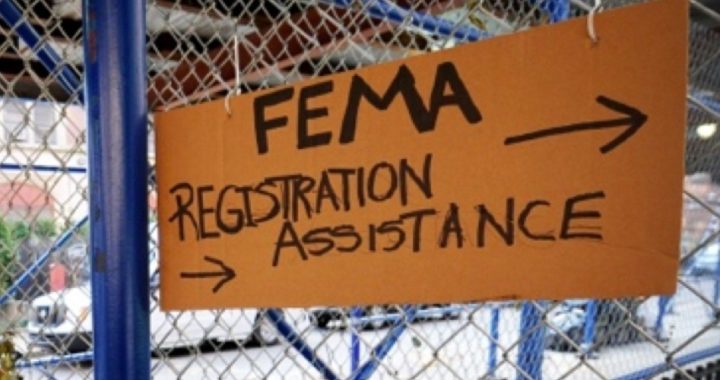
“If the government were to design a new disaster declaration system from scratch it surely would not look like the system that we have today,” the just-retired Sen. Tom Coburn (R-Okla.) asserted in a report issued shortly before his departure from the Senate.
Although the Federal Emergency Management Agency (FEMA) was originally intended to assist states only where disasters were of such magnitude that relief was beyond their capabilities, the number of disaster declarations has exploded in recent years. Routine weather events that would not previously have been cause for federal aid are now being declared disasters by FEMA, making the states in which they occurred eligible for assistance from Washington. “At one point this year [2014], there were 33 states with active disaster zones,” of which 18 “were for winter storms, where a large portion of the estimated damages included snow removal,” Coburn wrote. Moreover, the main criterion for determining when a disaster should be declared in a state is skewed such that “in some instances the same storm can result in a declaration on one side of a state border, but not on the other.”
The primary source of all this trouble is FEMA’s “per capita damage indicator,” the result of dividing the estimated damage from an event by the population of the state in which it occurred. If this quotient exceeds a certain threshold, a disaster is declared and aid is disbursed. Despite changes in the value of the dollar, individual incomes, and states’ fiscal health, FEMA has made few modifications to the indicator since it was introduced in 1985. “FEMA’s 30-year hesitancy to update it has significantly inflated the number of officially declared ‘disasters,’” averred Coburn.
To begin with, the per capita damage indicator has never been properly adjusted for inflation. FEMA started out with a threshold of one dollar, which remained unchanged through 1999. Coburn pointed out that FEMA considered adjusting it for inflation in 1998 but decided against doing so “because of the influence of state emergency management officials,” who realized that raising the threshold meant they would have more difficulty getting federal aid. Since 1999, the threshold has been adjusted for inflation, though FEMA has chosen to use the consumer price index rather than the growth in personal income as its measure of inflation, leading the threshold to increase to just $1.37 instead of $2.16.
As a result, the number of declared disasters has grown dramatically, with 2011 setting a record of 242 declarations. (There were 59 declared disasters in 1979, the year FEMA was created.) According to Coburn, a 2012 Government Accountability Office (GAO) analysis of disaster declarations from 2004 to 2011 “found that nearly half — a full 44 percent — of those disasters would not have met the threshold public assistance per capita indicator if the indicator had been adjusted for changes in income, and that 25 percent would have failed to qualify had the public assistance per capita damage indicator been adjusted for inflation.”
Another problem with the indicator is that FEMA relies on the last official census for its state population counts. That data, of course, becomes less reliable as the decade between censuses wears on. However, the Census Bureau does modify its counts annually based on births, deaths, and migrations. “If FEMA adjusted their population numbers based on the most current annual Census data, from 2008 to 2013, eight disasters likely would not have been declared, saving taxpayers over an estimated $93.4 million,” wrote Coburn.
The use of population in the indicator has one additional side effect: It favors states with small populations over those with large ones. Since the estimated amount of damage is divided by the population, an event might well qualify as a disaster in a small state but not in a large state — even if the event caused damage in both states. Coburn cited the example of a winter storm that hit northern Texas and southern Oklahoma in 2013. The damage from the storm was estimated at just over $5 million in Oklahoma and $30 million in Texas; but because Texas has a much larger population, FEMA denied its application for disaster relief even as it approved Oklahoma’s.
FEMA’s failure to consider states’ fiscal health is yet another factor in the large number of disaster declarations. The point of federal disaster relief, after all, is to help states that are overwhelmed by the costs of disaster recovery. If a state is perfectly capable of paying for its own recovery, then there is no justification for soaking taxpayers in other states to pay for it.
All of these factors “create incentives for states to overestimate the damage [from a disaster] because it gives them a better chance to secure federal funding,” Coburn noted. This is especially true because, he added, “there is no way to reclaim money if the estimates turn out to be wrong.” His examination of states’ damage estimates for 2011 and 2012 found that “states consistently overestimate the damage caused by weather events, and do so much more frequently than they underestimate the cost of the storm damage. The analysis found that in many of those cases, the events would not have been declared disasters if the states had more accurately assessed damage.” (Emphasis in original.)
One might be inclined to overlook some of FEMA’s extravagance if the agency were actually providing a net benefit to the country. On the contrary, observed the Washington Times: “FEMA has endangered disaster-stricken communities by placing them under the control of a lumbering, distant bureaucracy…. When disaster does strike, confusing regulations scare off emergency workers from other regions, since you can get called into court if you don’t jump through the right hoops.”
“The agency’s failure [in the aftermath of Hurricane Katrina] cost taxpayers billions of dollars, suffocating state and local governments and private aid organizations, which are far better suited to help disaster victims, and the failure put everyone at unnecessary risk,” the paper editorialized.
According to the Fiscal Times, various investigations of FEMA programs have found that “$4.7 million in Hurricane Katrina aid had either been misused or not used at all,” the agency handed out over $5.8 million in excessive Hurricane Sandy relief, and it “allocated $12 million dollars more than it should have to assist Cedar Rapids, Iowa[,] while responding to a severe flood that devastated the community in 2008.”
Coburn called on Congress to reform FEMA’s disaster-declaration process so as to reduce the number and cost of declared disasters and make the process fairer. While such reform would certainly be welcome, a better suggestion would be to simply abolish FEMA, which has no constitutional justification for existing in the first place. As Coburn noted in his report, the United States got along quite well before the federal government got into the disaster-relief business. It could surely do so again.
Photo: AP Images



